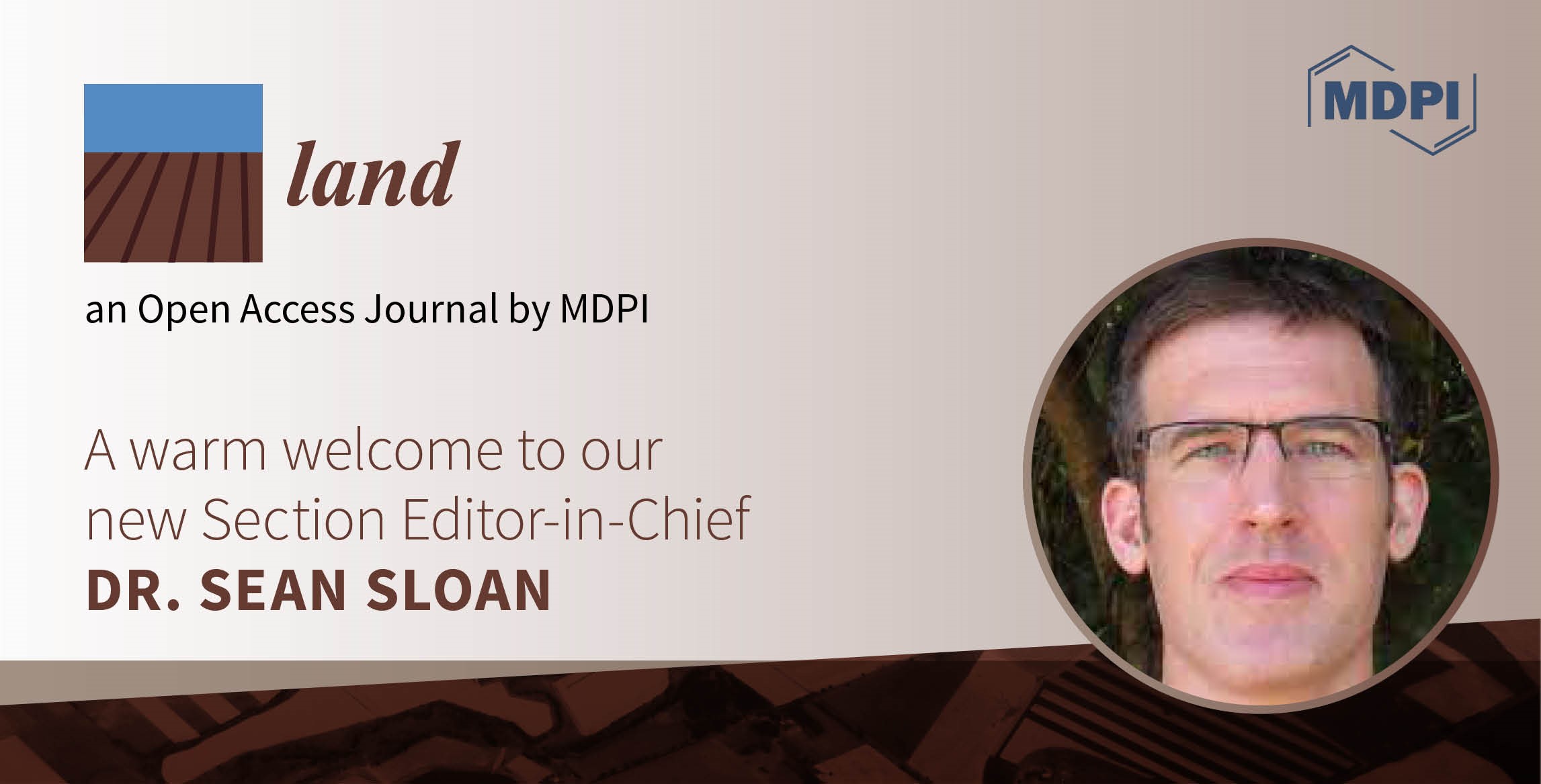
Dr. Sean Sloan Appointed Editor-in-Chief of the New Section “Land, Biodiversity, and Human Wellbeing” in Land
We are pleased to announce that Dr. Sean Sloan has been appointed Editor-in-Chief of the newly established Section “Land, Biodiversity, and Human Wellbeing” in Land (ISSN 2073-445X, IF 3.398).
Dr. Sean Sloan is a Canada Research Chair (Tier 2) in the Human Dimensions of Sustainability and Resilience and Professor of Geography at Vancouver Island University, Canada. His research interests encompass emergent trends to land management/change in the Global South, particularly with respect to the human dimensions of forest change, wildfires, and agriculture. Formally, Dr. Sloan was a Research Fellow at James Cook University, Australia, where his research extended to biological conservation amidst rapid road infrastructure development and related land exploitation.
The following is a short Q&A with Dr. Sean Sloan, who shared his vision for the Section with us, as well as his views of the research area:
1. What appealed to you about the journal that made you want to take the role as its Section Editor-in-Chief?
In my view, Land has served as a niche outlet for exploratory research often produced by emergent scholars, including junior scientists, those in the Global South, and/or other typically under-represented demographics. When carefully vetted and cultivated, studies from such scholars can often be visionary and exciting. I have always enjoyed bringing out the best of such studies. I now look forward to doing so formally as Section Editor-in-Chief.
2. What is your vision for the Section?
While cliché, it is true that we live in unprecedented times in many respects, in degree if not in kind. The impacts of unfolding land-change dynamics are arguably more cumulative than ever, or at least felt more widely in terms of individual and societal wellbeing, broadly defined. This Section, therefore, seeks to compile scientific studies and informed commentaries on the implications of land change and/or related biodiversity fluxes for human wellbeing, as with respect to physical, mental, and spiritual health but also notions of social and environmental security, resilience, prosperity, and peace.
3. What does the future of this field of research look like?
To date, the field has been both piecemeal (e.g., local case studies) or all-encompassing (e.g., global meta-analyses). Each approach has struggled to explicitly highlight and/or generalise the “connective tissue” between actual land management, actual biodiversity change, and actual human wellbeing. The promise of the field, and this Section, is in doing just this.
4. What do you think of the development of Open Access in the publishing field?
I have always held Open Access publication as necessary for a globalized world in which much scientific research is publicly funded, but where access to educational resources including publications remains highly uneven. The Open Access model provides unparalleled access to scientific knowledge amongst scholars and practitioners, particularly in the Global South, where journal subscriptions are very limited. Ultimately, the model contributes to greater knowledge dissemination and related applications, perhaps especially where they are most needed. In short, the model is both scientifically utilitarian and publicly virtuous.
5. Who should contribute to this Section, and what can readers expect?
Contributions are welcome from all keen observers of the nexus of land management, biodiversity, and human wellbeing. These include professional scientists but also informed practitioners of land management, conservation, health, etc., as well as stakeholders dealing with changes to this nexus.
We warmly welcome Dr. Sean Sloan to his new role as Section Editor-in-Chief, and we look forward to his leading Land to many more milestones.